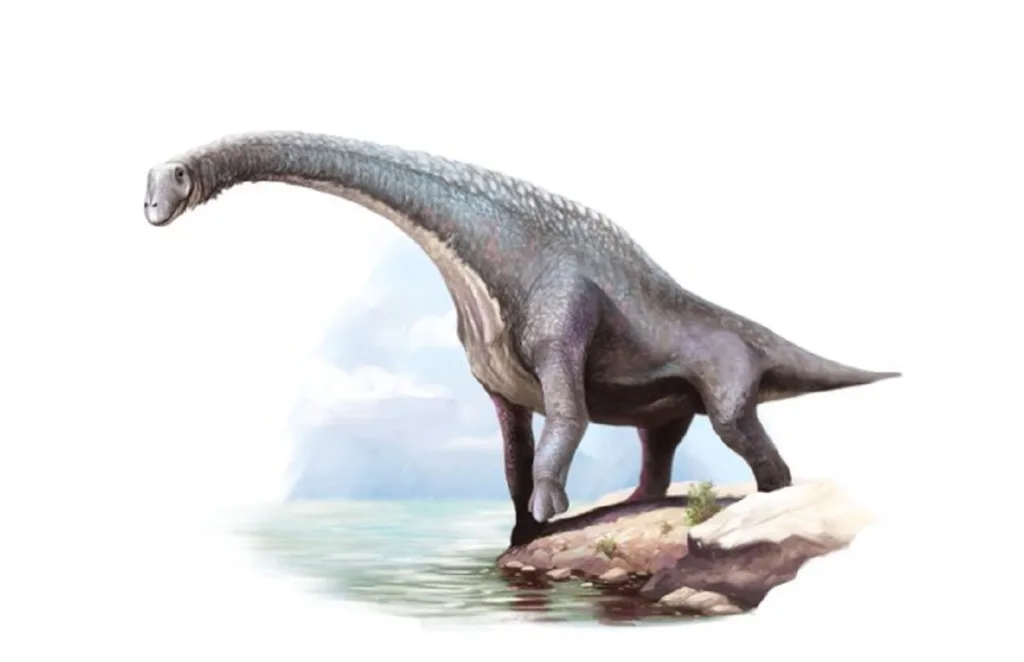A groundbreaking expedition led by scientists from the Indian Institute of Technology (IIT)-Roorkee and the Geological Survey of India (GSI) has transported us back through the annals of time to reveal the mysterious remains of an ancient, long-necked dicraeosaurid dinosaur. Their expedition guided them to the sun-soaked terrains of Jaisalmer, Rajasthan, where the shifting sands veiled an enigmatic prehistoric enigma.
The fascinating account of this journey has been meticulously documented in ‘Scientific Reports,’ an internationally acclaimed journal associated with the esteemed Nature Publishers. Within these pages, a revelation unfolds, challenging the boundaries of time and knowledge. These fossilized fragments, dating back a staggering 167 million years, introduce not only a new species but also a whole new chapter in the world of scientific exploration.
The chronicles of dicraeosaurid dinosaurs have been etched across continents – from North and South America to Africa and Asia – forming a captivating symphony of paleontological discovery. However, India’s role in this ancient narrative remained largely unknown until now. The fossils discovered in Jaisalmer shed light on an unexpected aspect, revealing that India played a significant role in dinosaur evolution.
A Five-Year Quest: Breathing Life into Ancient Remnants
Commencing in 2018 with the unearthing of fossil fragments from the Jaisalmer region, a dedicated team of six brilliant minds from IIT-Roorkee and GSI embarked on a five-year journey. Their efforts served as a bridge spanning millions of years, resurrecting the whispers of an ancient era.
The culmination of their endeavours revealed the identity of an Indian dinosaur that had faded from the annals of time. This discovery was aptly named ‘Tharosaurus indicus,’ with its nomenclature painting a vivid picture. ‘Thar desert’ pays homage to its discovery site, while ‘Indicus’ proudly proclaims its Indian origin.
Leading the Expedition: Sunil Bajpai and Debajit Datta
Guided by the expertise of Sunil Bajpai, a luminary in the field and Chair Professor of Vertebrate Paleontology at IIT-Roorkee, and his colleague Debajit Datta, a national post-doctoral fellow, the fossil fragments offer a captivating glimpse of a distant era.
Significance of Discovery
Sunil Bajpai emphasized the monumental significance of this discovery, stemming from its age. The rocks cradling these remains marked a unique distinction – they housed the oldest-known dicraeosaurid, a true pioneer over time. This finding extended beyond India’s borders, as it also claimed the title of the oldest diplodocoid, a broader category encompassing dicraeosaurids and their relatives.
Delving deeper into the fossilized remains, Debajit Datta uncovered a narrative that defied existing theories. Tharosaurus, standing as a testament to India’s ancient legacy, challenged the established chronology. This Indian marvel predated its Chinese counterparts, reshaping the saga of diplodocoid lineage.
Tharosaurus Indicus joins the ranks of ancient inhabitants like Barapasaurus and Kotasaurus, unveiling a vibrant ecosystem of the past within the geological contours of central India. Together, they compose a symphony, underscoring India’s pivotal contribution to the rise and proliferation of neosauropod dinosaurs.
Tharosaurus Indicus’s legacy extends beyond bones and rocks. It symbolizes our unending quest for knowledge, the power of collaboration, and the awe-inspiring mysteries that still lie hidden beneath shifting sands. As we celebrate this remarkable journey, we’re reminded that the past is an eternal enigma waiting to be unravelled.

